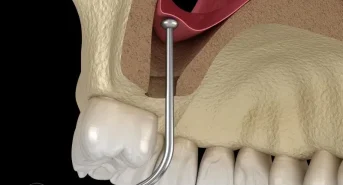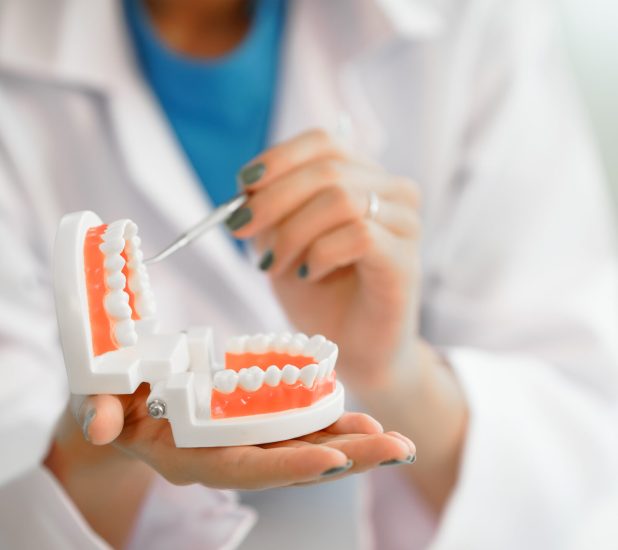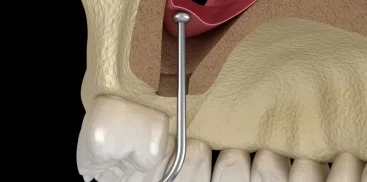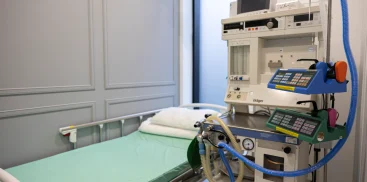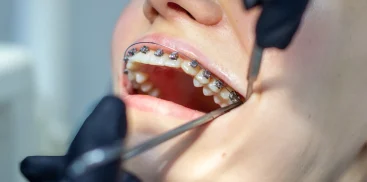Loose teeth may have various causes, but it is always a problem that should be dealt with as soon as possible in the dentist’s office, because if left untreated, it may even lead to tooth loss.
One of the methods, an alternative to traditional implantological and prosthetic procedures, is tooth splinting.
It is worth considering this option to solve the problem of loose teeth.
Find out what the treatment is and when it is used.
What is splinting of loose teeth?
Tooth splinting is a dental procedure that aims to stabilize loose teeth and avoid the need for removable prosthetic restorations.
The procedure involves connecting loose teeth using a special material (fiberglass or composite materials) to restore the physiological function of the dental arches and ensure the patient’s comfort while eating and chewing food.
Tooth splinting is most often used in the case of large bone loss and periodontal diseases, loosening of teeth due to mechanical injuries, the need for implants and during orthodontic procedures.
Teeth splinting can also improve the treatment of periodontal diseases.
Teeth splinting is also performed to establish bite balance and to treat parafunctions of the masticatory system.
It can also be used to correct the shape of the patient’s teeth.
Methods of splinting loose teeth
There are two ways to splint teeth.
The first one is performed using light-cured composite materials, the second one is performed using glass fiber.
Each of these tooth splinting methods is effective.
Whenever possible, healthy teeth are used to support the splinting.
What is splinting teeth with fiberglass?
Splinting with fiberglass in the case of loose teeth involves attaching a fiberglass tape to the teeth on the palatal or lingual sides, which stabilizes
bites a tooth or teeth.
Teeth splinting with composite
Composite material is quite often used to connect teeth and to stabilize them.
Loose teeth are connected on the palate or tongue side with a composite matched to the natural color of the teeth.
This is a simpler and cheaper solution than installing a fiberglass ribbon.
How is tooth splinting done?
The splinting of loose teeth itself takes several to several minutes.
However, the procedure usually requires prior tooth preparation, on which a splint will be placed with a drill, but it is not a complicated procedure.
Does tooth splinting hurt?
Splinting loose teeth is painless, regardless of the method used.
Pain may appear at the initial stage of the procedure, especially when the dentist has to prepare the interdental surfaces with a drill.
Local anesthesia can then be used, which increases the patient’s comfort.
Teeth splinting – price
The price of a treatment aimed at stabilizing and strengthening loose teeth depends mainly on the chosen method of installing a splint.
Splinting with fiberglass is more expensive than using composite materials.
How much money the procedure requires also depends on the number of immobilized teeth.
The final price is usually several hundred zlotys.
Advantages and disadvantages of tooth splinting
The situation when loose teeth need to be strengthened with a splint is the last alarm signal and a way to preserve the teeth, among others.
with advanced periodontal disease.
The advantages of the treatment are as follows:
- splinting stabilizes loose teeth and strengthens them,
- allows you to avoid crown posts and removable prosthetic restorations,
- By splinting teeth, periodontal diseases can be treated more effectively.
The main disadvantages of the procedure are its price.
The patient may also feel some discomfort at the beginning until he or she gets used to the new situation in the oral cavity, which is quite common in the case of loose teeth that have been present for a long time.
Teeth splinting –post-treatment indications
After splinting, proper oral hygiene is especially important.
You should brush your teeth after every meal and take care of the gaps between the connected teeth, which need to be cleaned effectively with dental floss.
Imprecise cleaning may result in the development of tooth decay.
After tooth splinting, regular visits to the dentist’s office are also necessary.
A good choice is a clinic proven and recommended by customers, such as Warsaw Dental Center, where a team of experienced specialists comprehensively and individually treats each patient.

